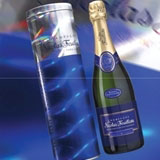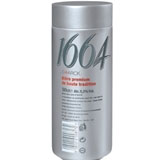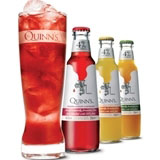Space age materials

From a bottle made of cornstarch that is completely biodegradable to a varnish with a warm feel and self-heating and self-chilling materials, the future looks bright for smart or environmentally friendly products. Trish Lorenz reports on the latest innovations
In the 1960s, when US space agency Nasa was set the almost impossible task of landing a man on the moon, the organisation quickly realised it needed new materials able to cope with the stresses and demands of space flight.
In response, manufacturers delivered a whole host of innovations in materials development – Teflon is perhaps the most famous – which the rest of us have been making the most of across packaging and product design ever since.
And, though we’re no longer bent on conquering space, recent developments, in particular environmental concerns and the rise of nanotechnology, are once again radically altering the type of materials packaging designers can employ.
Environmental issues have been driving some of the most interesting developments in materials, with fully biodegradable substances now coming to market. Innocent Drinks, which trades on its ethical credentials, is launching its first fully biodegradable bottle in September. Made of cornstarch, this plastic-like substance reverts to plant matter when discarded.
‘We are always looking for the most natural and sustainable solution,’ says Innocent packaging technologist Stuart Allen. ‘The new bottle will be made from a 100 per cent renewable cornstarch. There are no oil-based products in it, which means it is 100 per cent biodegradable.’
Aesthetically, the bottle is very similar to existing products, and Allen believes consumers will not necessarily recognise the difference. ‘It’s slightly more yellow and a bit softer. But, in terms of branding and graphics, we haven’t lost any quality. In fact, it’s giving better results,’ he says.
Other environmentally driven innovations are seeing manufacturers develop alternatives to PVC, in particular for food items, where there are concerns about the chemical migrating into the product. Dan Abramowicz, president of packaging technology at Crown, one of the world’s largest materials manufacturers, says the company is working on an elastomer sealant that will enable baby food manufacturers to dispense with the PVC linings currently in use.

But material innovation is also going beyond the worthy to the practical. Crown, for example, is working with clients to create self-heating and self-chilling materials, which are able to heat or cool products. This is achieved either through chemical reactions or exploiting the temperature effects of vacuums. Bloom design director Toby Wilson says smart packaging – materials that can respond to a product’s environment – are where the future lies.
The group has recently designed packaging for Diageo’s Quinn’s, a lower alcohol and fruit juice blend aimed at women and one of its biggest launches in recent years. It uses a specially designed laminate (applied over a glass bottle), which reduces the amount of light penetrating to the product and thereby lengthening its shelf life. This is only the very early precursor of much more significant developments, says Wilson.
Smart packaging materials will be able to react to chemicals that the product releases as it ages, and then take action to rebalance the pack’s internal environment and extend shelf life, he adds. ‘Manufacturers are actively developing materials that are able to monitor both the environment and the product, and then manipulate the internal environment to help keep products fresh.’
Nanotechnology, another futuristic concept, is also throwing up some interesting ideas for designers to consider. PI Global partner Steve Kelsey points to materials developed by the US military as having obvious commercial applications.
‘It has already developed a material that has such tiny holes that it allows water to penetrate, but is too small for bacteria to ‹ access. At the moment, it’s only the military that can afford to use it, but there are so many possible applications for commercial use that it will commercialise fairly quickly,’ he says, predicting consumers will reap the benefits within five years.
While packaging may initially have been designed to ensure product quality, today it clearly plays a heavy branding role too, something not lost on designers who recognise the opportunity to use innovative materials to extend brand equity on pack.

Both Wilson and Kelsey point to the development of paper-thin, organic, light-emitting diodes (known as OLEDs) as a major advance. Much less costly to make than traditional LCD displays and more flexible in composition, they can be wrapped and used on packaging and could enable brands to project moving images on pack. Manufacturers like Siemens in Germany are among those developing this technology.
According to Wilson, colour displays will be evident on higher- end products within the next couple of years. ‘The technology is limited to a small number of individual frames at the moment and won’t be cost-effective for most products initially,’ he says. ‘But, in the future, this type of technology could enable brands to run ad campaigns on packaging.’
At a more prosaic level, unusual finishes that can be applied to existing materials are also being developed. For instance, Corus has created a very thin, polymer-coated material that can be applied over steel and contain holographic images. The material has already been tested – it was first used by champagne brand Nicolas Feuillatte last year.
Crown, meanwhile, has created Soft Touch, a varnish that gives metal products an unexpected warm, tactile and gentle feel, and has also developed a pearlescent silvery finish, first applied by Philippe Starck to a limited edition beer can for Kronenbourg 1664, which raises the humble aluminium can to new heights.
It seems there’s plenty of innovation in the offing and, while devising inventive new packaging is hardly the same challenge as landing a man on the moon, Kelsey believes designers need to take Nasa’s forward-thinking approach and challenge manufacturers to continue to deliver groundbreaking materials.
‘It’s about time designers started to consider materials more seriously,’ says Kelsey. ‘Designers tend to accept the materials that are given to them. They should push back on manufacturers and tell them what needs to be achieved. Manufacturers like Eastman Chemical Company are very innovative and want to develop new things, but designers aren’t taking them up on their offer.’
-
Post a comment



